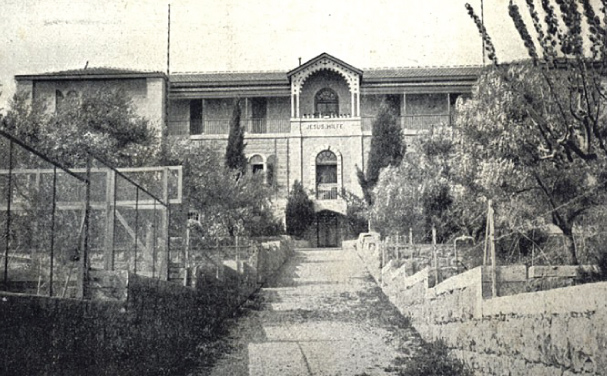In the early 19th century there were no real medical facilities in the Jerusalem. The first modern hospitals were established by Europeans. Leprosy, an infectious disease, was a stigma. It was also misunderstood.
The Hansen House story began with a visit from Germany, of the Baron and Baroness von Keffenbrinck Ascheraden, to the old city of Jerusalem in 1865. During their visit, they encountered lepers living in tents and mud huts at the Zion Gate, an encounter that brought them to decide to promote the establishment of a proper asylum for people with leprosy. In cooperation with a committee of the Joint Anglican-German Protestant Community in Jerusalem, the first leper asylum was established in 1867 next to the old Mamilla Pool. When this initial structure could no longer fit all people with leprosy seeking shelter, it was decided in 1882 that a larger home be built.
Designed by Conrad Schick, a German missionary and self-taught architect, the spacious two-storey building named "Jesus Hilfe" (Jesus Helps) was opened in 1887 with 65 patients. Set among fruit trees and a vegetable garden, it provided clean air, hygiene, nutrition, work, and spritual and emotional support for the patients who were mostly Muslim but there were also Christians and a number of Jews. It was the only place of its kind in the Middle East.
The hospital operated from 1914-1948 with European staff. By 1948 it became part of the Ministry of Health and continued to function until 2000.
 |
| Main Entrance and Gardens |
 |
| Hansen Hospital Museum |
The city decided to preserve the building and in 2013 the compound became part of the Bezalel Academy of Arts and Design masters program. The centre includes exhibition spaces, an animation lab, theatre performance space, a projection room, studios for visiting artists, an artists guest house and a restaurant.
I revisited the building last week for the first time since its restoration and enjoyed the delightful Ofa'im Cafe which serves delicious dairy meals in historic surroundings. The small museum is open to the public free of charge.


